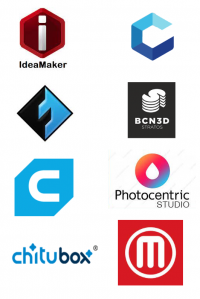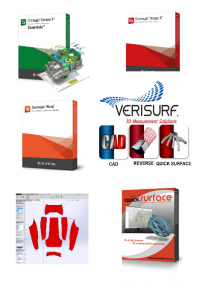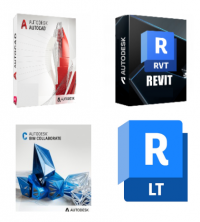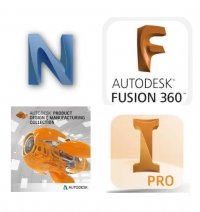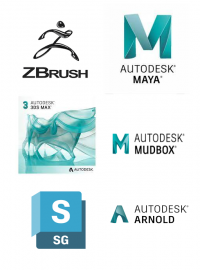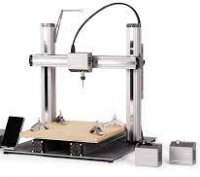- Shop All
- BRANDS
- 3D Printing
3D Printing Materials
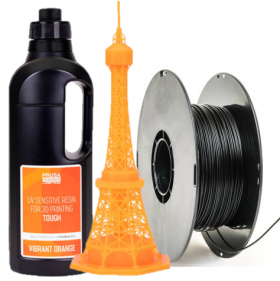
All 3D Printing Parts/Accessories

- 3D Scanning
All 3D Scanners
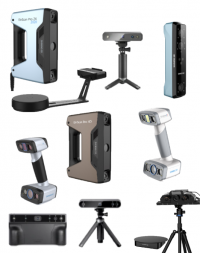
3D Scanner By Type
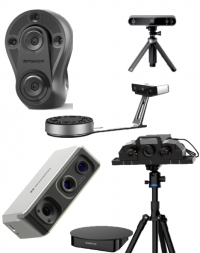
3D Scanner Parts/Accessories
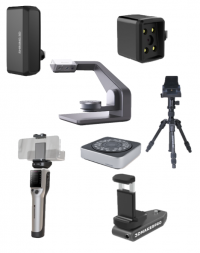
- SOFTWARE
- Other Tech
3D FORMERS

WELDING
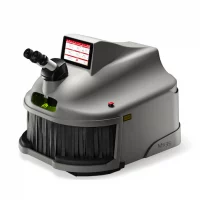
The Digital Approach to Same-day Custom Ear Molds

We wanted to share this case study between Hearing Beyond and Frank Talarico, MCISc with Shining 3D
Introduction
Frank Talarico owns and practices at the Hearing Beyond Audiology and Hearing Clinic in Toronto, Canada, where he implements various innovative and creative techniques to help his patients hear and communicate better. Frank has worked extensively with the Glia project to help make hearing healthcare more globally accessible.
Always trying to find innovative and useful ways to meet his patient’s hearing needs, real ear measurements and speech-in-noise testing, well-known pillars of audiology best practices have been inherent parts of his daily working life as an audiologist, as well as same-day emergency appointments, weekend availability and since lately, same-day custom ear molds. Same-day custom ear molds provide many great benefits to his patients. Let´s embark together on the journey how Frank made this innovative in-house open source approach become reality with the help of 3D scanning and 3D printing.
What is a same-day ear mold?
A same-day ear mold is a type of mold that can be made for a patient within the same day of requesting for one. These types of molds are sometimes referred to as instant molds. Usually, in order to make ear molds for a patient, ear impressions are taken of the patient’s ears and mailed to an ear mold lab, then the molds are created at the lab and sent back to the clinic for fitting. This whole process takes around one to two weeks. Recent advancements in ear impression technology have streamlined this process with ear scanners to avoid taking physical ear impressions, but the process still takes around a week to receive the end product ear molds in clinic. Also, if further adjustments and fit modifications are required for the ear molds, even more additional shipping time and processing time is added on. In this process, patients are often left without appropriately fitting devices while they wait for ear molds.
A same-day ear mold helps a patient hearing while waiting for a mold to be made from the lab. As an audiologist, Frank believes that every day should be a hearing day, so why miss out on all that hearing? Usually, the patients that require ear molds coupled to their hearing devices have more significant hearing problems and need their hearing aids working well all day, every day. If their ear molds need servicing, going a week or two without appropriately fit hearing devices would cause a significant hindrance on their daily life. For most patients, loaner hearing aids will suffice, but if the patient requires a mold, the loaner hearing aid likely won’t provide enough power. By providing a same-day ear mold, patients can continue to hear well, no matter their level of hearing loss.
Another great advantage of same-day molds could also be used to trial amplification with patients that require high output devices. With same-day molds, there is no need to use an uncomfortable foam tip coupled to a behind-the-ear power hearing aid or a poorly fit receiver-in-the-canal hearing aid during a trial. A same-day ear mold could be made in office and fit to a power hearing aid, allowing patients with a severe to profound hearing loss experience better hearing as if they had custom made molds from a lab.
Same-day molds can also be used in low resource settings to help fit individuals with donated behind-the-ear hearing devices. Low resource areas often have a stock of donated traditional behind-the-ear hearing aids, but no effective means of creating ear molds. Often these behind-the-ear hearing aids go unused, due to the lack of properly fitting ear molds. The open-source method can be used as a solution for better utilizing donated behind-the-ear hearing aids.
The Same-day Ear Mold Method
3D printing is affordable, versatile, and ubiquitous regardless of the geographical location. 3D printers have become a much more globally accessible tool, and are often marketed as a consumer good with little to no tinkering to get started.
In the process of designing the custom ear mold, Frank started by taking a standard impression of the ear. Then with a sharp knife, he cut off the excess parts of the impression that he didn´t need.

Figure 1. CARL (Clinical Assistant for Research and Learning) with ear impression material setting in the ear. After the impression has set, excess parts are trimmed off. Hearing Beyond, Toronto (own photo).
Using the EinScan-SE Desktop 3D Scanner, Frank created a 3D scan of the shaped ear mold.
“This scanner has a very high accuracy, which is important when scanning a small item like an ear impression.”– Frank Talarico, MCISc
After having obtained the ear mold scan, some minor digital adjustments were made to fix blemishes that the impression had, and a tubing bore hole through the mold was added. The scanning data was then adjusted digitally in Blender.

Figure 2. Ear impression being scanned and digitally manipulated. Hearing Beyond, Toronto (own photo).
The final step in the one-day custom ear-mold process is to 3D-print the ear mold file. In order to make a soft ear mold, Frank uses a rubber-like filament called Recreus FilaFlex 70A, which has a Shore 70A rating. Using this material in 3D printing creates an ear mold that feels similar to Formaseal.

Figure 3. 3D printer extruding filament to make a CARL ear mold. Hearing Beyond, Toronto (own photo).
After 3D printing the mold, Frank ensured it fitted properly. He secured the ear mold tubing inside the tube bore, and then fit it to the patient’s ear and hearing aid. Real ear verification can then be performed to verify the hearing aid fitting.

Figure 4. Finished ear mold beside original ear impression, and CARL fit with the ear mold, undergoing real ear measurements. Hearing Beyond, Toronto (own photo).
In this case, real-ear measurements were performed on CARL fit with an ear mold and coupled to a power hearing aid (Bernafon Leox 7 Ultra Power) (Figure 4). A flat, severe (80dB HL) hearing loss was programmed for real ear verification, and the responses were able to meet DSL 5.0 adult targets without feedback.
Usually, it takes around 2 hours to 3D print a left and right ear mold, but this is heavily dependent on the size of the mold and the type of material used.

Figure 5. Filaflex 70A flex demonstrated. Hearing Beyond, Toronto (own photo).
Benefits of 3D Printing Same-day Ear Molds
Current same-day ear mold products on the market require you to buy a 2-part mix kit, but tend to be finicky when it comes to embedding tubing into the mold. The patient needs to be present for the mold to be made, and you can only make adjustments to these types of products the old-fashioned way: with a grinding or buffing wheel. By using a 3D scanner, the ear impression is saved as a digital file, and any adjustments you want to make can be made on the computer with exact accuracy. If you wanted to add a vent, you can program that into the file. If you wanted to make speakers embedded into the ear molds, an appropriate adjustment can be made digitally to fit these components in. If the ear mold is not fitting properly, adjustments can be made on the scan file, and the ear molds can be 3D-printed again. The whole process doesn’t need to be repeated like the other methods. Furthermore, if you have impressions on file for a patient, they can be scanned and printed without the patient having to be physically in the office.
One of the biggest advantages to this method is that it is open-source. The software, hardware, and materials (and alternatives) used in this method can be accessed by anyone, without having to buy proprietary 2-part mixes each time you want to make an ear mold. This allows same-day ear molds to be accessible and available to any hearing healthcare professional.
3D printing has become a highly adopted method of manufacturing in low resource areas. I work with an organization called Glia, which increases the access of high quality medical supplies and devices in low resource settings by utilizing 3D printing. Many countries have adopted 3D printing to make stethoscopes, otoscopes, and tourniquets in-house, in order to provide themselves with high quality medical tools to treat patients. By adapting 3D printing as a means of production, countries can be self-reliant and manufacture high quality medical devices and supplies locally.
References
Diles, B., Diles, W., & Jasa, A. (2020). The hearing aid test drive: a whole-practice approach for the new consumer. AudiologyOnline, Article 26528. Retrieved from https://www.audiologyonline.com
Talarico, F. (2021). Going beyond best practices: same-day custom ear molds. AudiologyOnline, Article 27853. Retrieved from https://www.audiologyonline.com
If you would like to know more about Frank Talarico and Hearing beyond you can check out the website www.hearingbeyond.ca , Facebook https://www.facebook.com/HearingB and Instagram
To see some other scanned model examples captured by this scanner or other Shining 3D Scanners please check out our scanned model library here: Shining 3D| Library of scanned models| Dream 3D
For full details on the Einscan SE including features and specs along with pictures and videos please see the product page here: Shining 3D EinScan-SE | Dream 3D
Don’t forget we stock the full range of Shining 3D Einscan 3D Scanners: 3D Scanners – Handheld, Turntable, Tripod Mounted | Dream 3D.
If you have an queries regarding this 3D Scanner or any others or if you would like to request a bespoke quote, please contact us at info@dream3d.co.uk / 07789266163
Thanks for reading 🙂

Specialist retailer of 3D Printers, 3D Scanners and 3D Software since 2013
My Account
- Sign In
- Create New Account
- Delivery/Order Queries
- Vouchers
- Returns/Refund Policy
- Payment Methods
We accept

Categories
CUSTOMER REVIEWS
© Copyright - Dream 3D Ltd | Cookie Policy | Privacy Policy | Price Match Promise | Refunds/Returns/Cancellations Policy


